I have always been a Claussen Kosher Dill Pickle fan. Forever. I don’t like sweet pickles or bread and butter pickles, they just aren’t my thing. Claussen just tastes better, in my opinion, I don’t even like the shelf brand dill pickles. They are either too sweet or too tangy. That’s why I posted this Claussen pickle recipe several years ago.
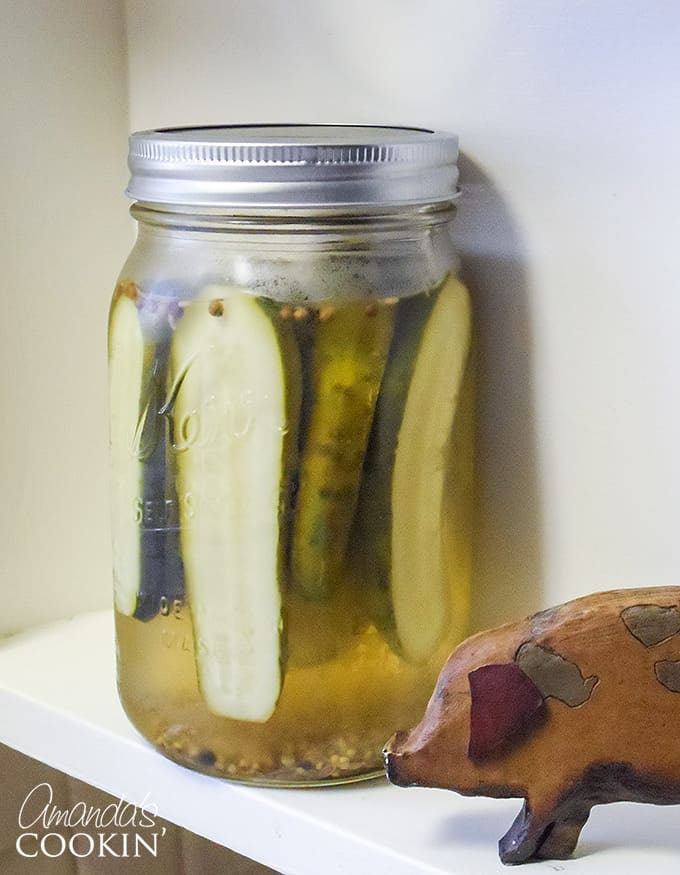
Refrigerator pickles are a lot easier to make because they don’t require using the traditional canning process. That also means they can’t be stored on a shelf in the basement or in the pantry, they must live in the refrigerator.
Recipe for Claussen Pickles at Home
Last year I made some pickles with the canning method and the recipe that I used had a very high vinegar to water ratio. So they were far too vinegary for me to eat straight from the jar, which is one of my favorite things, though they were great on burgers and in potato salad!
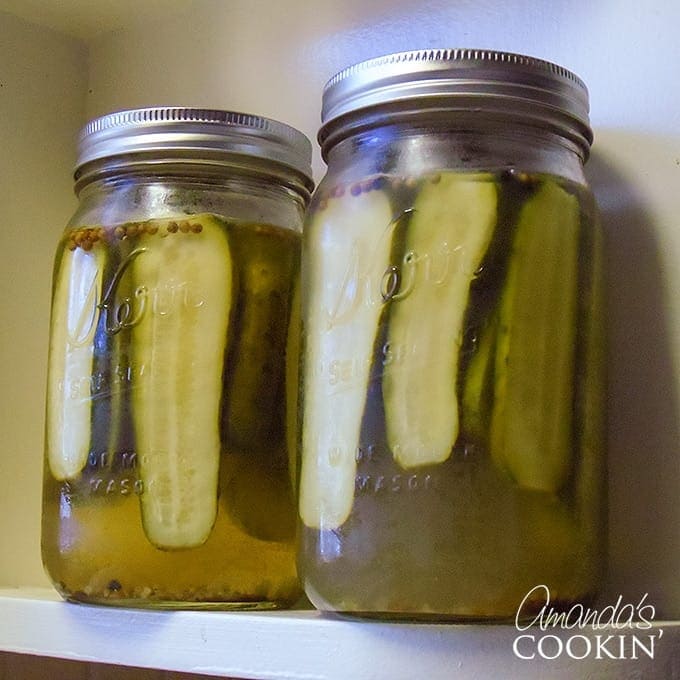
So I started my search for a Claussen copycat. I found this one but it used apple cider vinegar. I as concerned that would create a sweet pickle, which I don’t like, even though the author of that recipe is just like me. Yuk to sweet pickles!
So I looked at the actual Claussen ingredient label and it said they used distilled white vinegar. Some of the ingredients were different too, so I decided to use the recipe that I found as a jumping off point and created my own version.
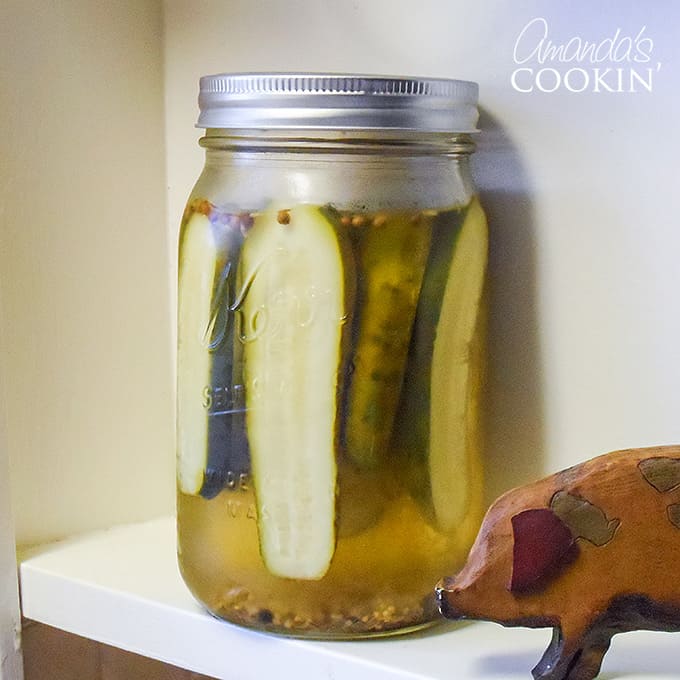
The verdict? Everyone in this house loves them! They aren’t exactly like Claussen, but pretty dang close! Close enough that they get devoured by everyone in this house.
They are actually fun for me to make. So while it would certainly be easier for me to grab a jar of Claussen from the grocery store, and I probably still will now and then, I love making my own.
My first batch was a bit cloudy, and they also had a distinctive mustard flavor. So I cut back the mustard seed in the second batch and I believe we now have a winner. :)
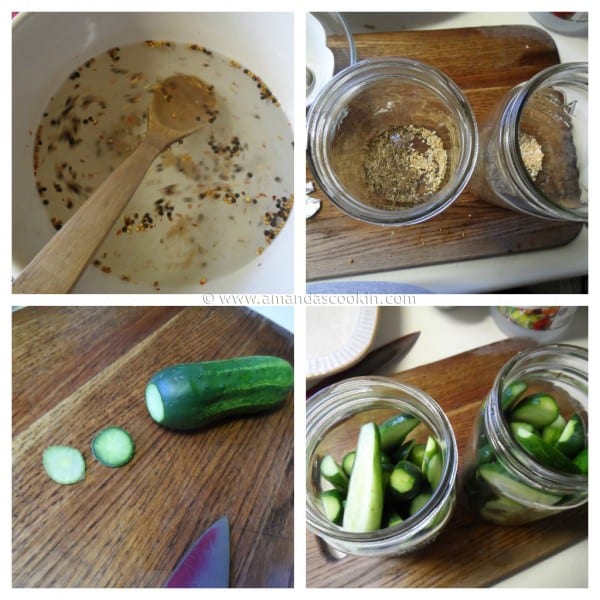
You’ll make the brine first, it’s easiest to do it in a 2-quart pitcher. You’ll see me mixing the brine in a bowl in the picture above. Don’t, it’s an extra step, just use a pitcher. Put the dill seed and dried garlic in the jars.
Now, make sure you give your pickling cucumbers a good rinse, make sure there’s no dirt. Trim the blossom end, I trim both ends, then cut in half lengthwise and distribute in your jars.
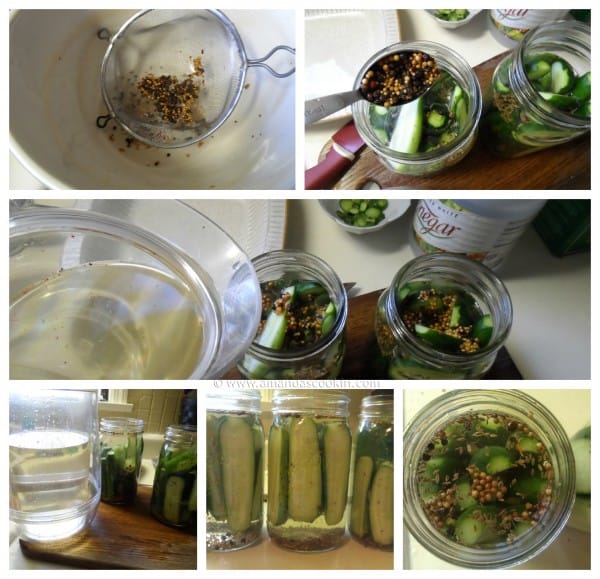
Before adding your brine, strain out the solids. Distribute the solids evenly among the two jars, then add brine. You will have leftover brine that can be discarded when you are all done.
When you perch the lid on your jars, you want air to be able to get in and gases to be able to escape.
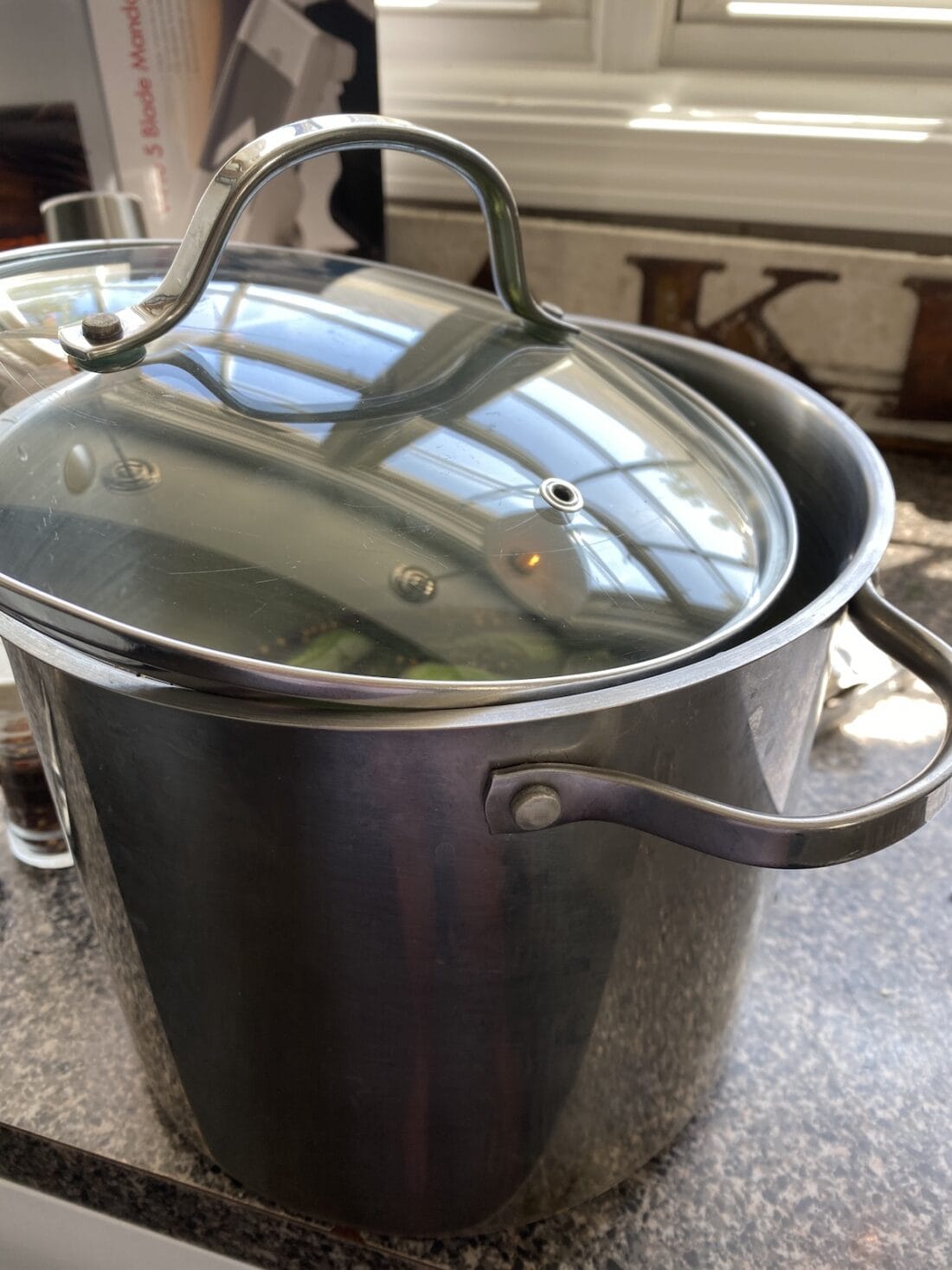
I actually put my pickles in one big pot now and then move them to a large covered glass container in the fridge instead of using jars now. Someone in the comments asked for a picture of perching the lid, you can see that above.
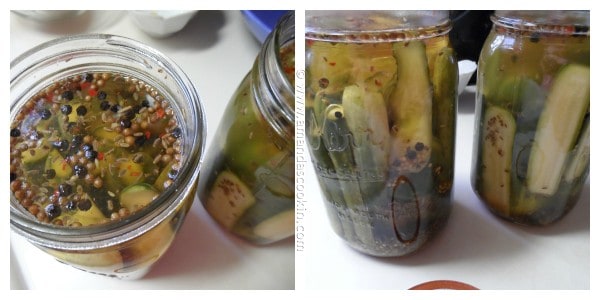
This is what they will look like after a day or so. They usually take 2-4 days. My first batch took the full four days while my second batch was ready in two and a half days. I think the difference was that I actually used three jars and they weren’t packed as tightly.
Enjoy – crunch!
Troubleshooting your pickles
Scum or film on top – During your first few days, fermentation takes place. You will probably see bubbles rising to the surface and may see some “scum” forming on the surface. Skim this off and discard. This is a completely normal step in the fermentation process.
White sediment at the bottom of the jar – According to Colorado State University, “A white sediment at the bottom of the jar may be caused by anti-caking agents in the salt or by the fermenting bacteria. Neither cause is harmful.”
According to Colorado State University “…factors that lead to spoilage include failure to remove blossom ends, failure to thoroughly wash products to be pickled, not removing the scum that accumulates on curing brines, using a weak brine or vinegar solution, not keeping the pickles covered with brine throughout the curing process, using deteriorated ingredients such as moldy garlic or decayed spices, or storing the pickles at too warm a temperature.”
You can download the complete PDF document from The Colorado State University here.
Important Tips to Note
The Blossom End
The blossom end of the cucumber (the end opposite from the stem) contains an enzyme that can make your pickles turn mushy. Always cut it off, I cut off both ends for good measure and to keep them uniform.
Vinegar
Use vinegar that has at least 5% acidity. Don’t reduce the vinegar in this recipe.
Salt
Only use pickling salt or coarse (NOT flaky) Kosher salt, though I always use pickling salt. Table salt contains an anti-caking agent that causes the brine to get cloudy. If you use table salt, it’s still safe, but you will have a cloudy jar of pickles with white sediment at the bottom.
Cucumber Types
Use cucumbers that are of the knobby variety, grown specifically for pickling. Check seed catalogs to find the different varieties. Cucumbers with a wax coating are not recommended as the brine will not be able to penetrate them. When selecting cucumbers, be sure that they are firm and not soft.
Wash Your Hands!
It’s tempting to reach in and turn your cucumbers, but please make sure you wash your hands first. Introducing any foreign oil or material from your skin could cause problems with your brine.
Texture
A couple of our readers have mentioned using pickle crisper in their mixture which helps prevent the pickles from getting soggy. You can add 1/4 teaspoon of pickle crisper to each quart size jar if desired.
When your pickles are all gone, do you pour the pickle juice down the drain? Instead, try these ideas for reusing pickle juice! Looking for a unique recipe to try with your freshly make pickles? Here’s a Grilled Tomato Relish that’s great on burgers and dogs!
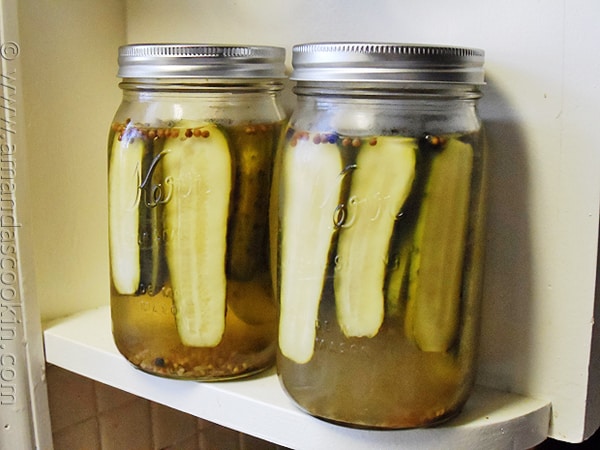
This Claussen pickle recipe was originally published here on September 18, 2012
More Related Recipes
- Cucumber Salad
- Sweet Corn and Chickpea Salad
- Grilled Corn and Zucchini Salad
- Pickled Beets
- Pickled Onions
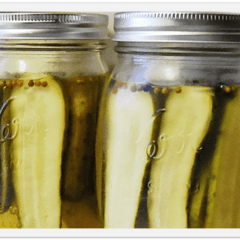
Homemade Claussen Pickles Copycat
IMPORTANT – There are often Frequently Asked Questions within the blog post that you may find helpful. Simply scroll back up to read them!
Print It Rate ItIngredients
- 20-25 small to medium pickling cucumbers
- 2 quarts cold water
- ½ cup white vinegar
- ⅓ cup canning/pickling salt or coarse Kosher salt
- 1 teaspoon coriander seed
- ½ teaspoon mustard seed
- ¼ teaspoon red pepper flakes
- 1 tablespoon black peppercorns
- 1 tablespoon dill seed
- ¼ teaspoon dried garlic
- Fine mesh colander
- 4- cup measuring cup
- pickle crisper optional
Before You Begin
- A couple of our readers have mentioned using pickle crisper in their mixture which helps prevent the pickles from getting soggy. You can add 1/4 teaspoon of pickle crisper to each quart size jar if desired.
Instructions
- To make the brine, combine water and vinegar in a large pitcher. Add salt, coriander seed, mustard seed, red pepper flakes and black peppercorns. Stir until salt is dissolved. Set aside.
- Wash cucumbers in water and trim 1/8-inch off of the blossom end of each one. Slice each cucumber in half lengthwise.
- Divide the dill seed and dried garlic evenly between two clean quart sized jars. Fill jars with cucumber halves, fitting as many in as you can, they may be snug!
- Stir brine again to mix ingredients. Place a fine mesh colander over a large bowl or measuring cup. Pour brine through the colander, catching the brine solids in the colander. DO NOT discard!
- NOTE: You will not be able to fit all the water in this measuring cup or in the two jars. The goal here is to save the brine solids and use them, you will be discarding the left over vinegar and water mixture when finished.
- Once all the solids have been removed from the brine, distribute them evenly among the jars. Using the brine liquid in the measuring cup, pour into the jars until all the cucumbers are covered.
- Your brine level should cover your cucumbers and reach the bottom of the jar neck where the twisting begins. The cucumbers will also release some liquid as they brine, so don’t overfill the jar. Discard any remaining brine liquid.
- Cover lightly with a lid perched on top but DO NOT close and seal. Leave on the counter (out of direct sunlight) for 1 day, then move to the refrigerator for 2-3 more days, or until the cucumbers taste like pickles throughout.
- Secure lids on jars and refrigerate for up to six months.
Nutrition
Amanda Davis
Latest posts by Amanda Davis (see all)
- Lemon Sweet Rolls - March 6, 2025
- Irish Stew - March 3, 2025
- Doubletree Chocolate Chip Cookies - February 24, 2025
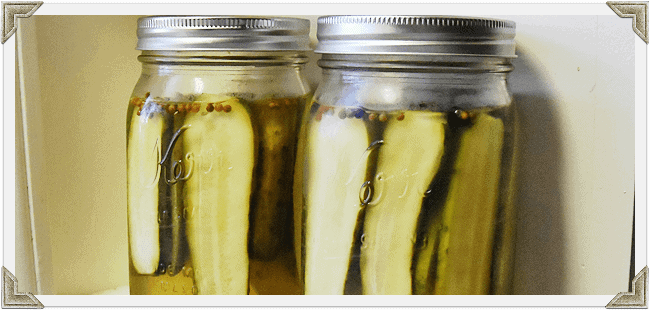
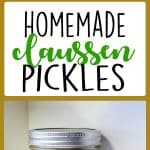
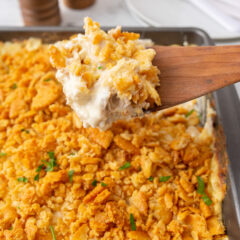
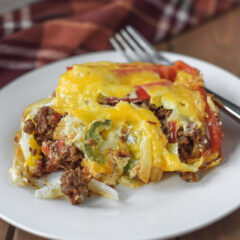
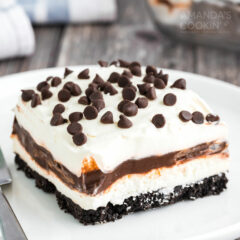
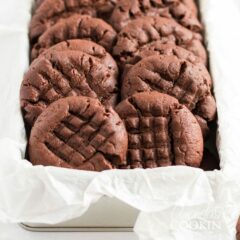





Rick says
1650mg salt for 1 pickle? That can’t be right. Lol death pickles if they are 1650 each
Mary says
So can you show a photo of how your perched the lids for fermenting?
Thanks
Amanda Formaro says
I will add a photo to the post
Chelsea Fonseca says
Can you use fresh garlic instead?
Mimi Clausing says
Since there is so much brine leftover, why don’t you increase the amounts of spices and cucumbers to accommodate the brine? I actually used the required amount of cucumbers and filled 2 quart jars and 5 pint size jars with cucumbers and still had 2 cups of brine leftover! I hate to be critical but it’s a shame to waste the brine when it can be used.
Agnes says
I think it should be fine. It’s not a traditional fermented pickles recipe, as it has vinegar in it. I actually used homegrown not quite pickle cucumber variety last year – cutting in long slices and dumping them in leftover brine from Claussen pickles. They were a little lighter flavored that way – more like half-hour pickles which is just fine with me – but the variety worked fine. Just pick them fairly small before seeds get large. I’m really excited to try this recipe instead this year!
Tonya says
I used canning/pickling salt and these turned out WAY too salty! Next time I’ll use kosher salt (much coarser, so less will actually fill 1/3 c.
Jeff mcleod says
Yes, I also found the recipe to be a little salty I cut the salt I put in by about a third and used a third more vinegar.
Trent says
What size jars do you recommend?
Hannah says
Really yummy! I used regular pickles since that was what I had, and they still turned out. I also used sliced raw garlic instead of dry. I’m still waiting for the pickles to finish their few days of marinating in the fridge, but so far they taste delicious! I will be using this recipe again, although I may add a little more vinegar next time. (I think Claussen’s have a bit more zing than these? But maybe by the next couple of days the pickles will taste stronger, too.)
Emily Hammett says
So I made this recipe because my husband loves Claussen pickles, I don’t even like pickles 🤣 but they have now been in the refrigerator for 3 days and they still smell more like cucumbers with a hint of pickles instead of like pickles. My husband tried one and said it’s good but doesn’t have that pickle/vinegary taste (if that makes sense) so my question is do they just need to sit more?
Amanda Formaro says
Yes – the longer they sit, the more they will soak up the brine. You didn’t use regular cucumbers, did you? Regular cukes have a waxy coating that the brine cannot penetrate well.
Heather says
So I read it as leaving the pickles on the counter for 2 – 3 days and in the fridge for 1. Will they still be okay sitting on the counter for 2 days??
Amanda Formaro says
Sorry for the confusion. It’s actually opposite of that. 1 day on the counter then 2-3 days in the fridge.
Valerie Kelly says
Hello :) thank you for sharing this recipe . So Claussens hearty garlic are my favorites . Can adding fresh garlic be okay to this recipe or will it mess it up ? Thanks you for you time .
Jamie says
So you do not completely shut the lid?
Amanda Formaro says
Correct! Shutting the lid completely will not allow the natural gases to escape during the fermentation process.
Cindy E. says
These are the absolute BOMB! So quick, easy, and delicious….what more could a person ask for? I just added the spices to the jar (on top of the cucumbers) before adding the brine. I also used fresh garlic, not powdered. They were perfect after two days on the counter, so into the fridge they went.
Debbie says
Hi Amanda. I have never made refrigerator pickles, only canned. Do I not need to sterilize/boil the jars and lids like I do when canning? Can I just pre-wash in the dishwasher?
Amanda Formaro says
You can just prewash :)
Lynette Bailey says
Thanks for the info! One more question. Could i use this recipe for canning to put on the shelf instead of to refrigerate?
Amanda Formaro says
No this recipe is not made for canning
Jennifer says
Do you heat the brine or is it all done uncooked? Could you just evenly disperse the spices among the jars without first mixing in the liquid and skip the strainer step?
Rachiel says
I would really love to try this recipe, my only concern is the mustard seed. My husband is allergic to mustard, is there something other than mustard seed that can be used?
Thanks!
Amanda Formaro says
That’s a great question. First off, replacing anything in a pickling recipe can affect the PH balance and change the science behind how it works. The safest thing to do would be to leave it out and not substitute anything, but I have to let you know that it will change the flavor. They’ll probably still be fine, but just so you know. Also, I would say call your doctor’s office. I read that mustard seeds do not affect those allergic in the same way as prepared mustard does. Please check with your doctor’s office :)
Jana Rae Gray says
I just finished loading up a jar. I will let you know how they turn out.
Ben says
I’m very excited to make these. I grew up in Huntley, Illinois (just south of Woodstock, where Claussen is headquartered) and recently moved up to BC, where I have not seen a Claussen jar.
Amanda Formaro says
Claussen jars have been kind of scarce around here too. Apparently the pandemic caused a glass jar shortage. So I haven’t been able to buy the minis that I like to get!
Ben says
These are so good. I ate three one-liter jars of them and just started fermenting a second batch of four one-liter jars. My girlfriend who is picky about pickles loves them, too.
Rick says
I’m also in BC. I’ve been driving around all over the place looking for Claussens with no luck. So now I’m going to make my own!
Lynette Bailey says
I stupidly only grew Burpless cucumbers and have an abundance of them. Is there any way this would work with them? I absolutely love claussen pickles and would love to try this.
Amanda Formaro says
Good question. This is what I found – “Burpless cucumbers are not suitable for making fermented pickles because they produce an enzyme causing the pickles to soften during fermentation. Smaller burpless cucumbers with small seeds may be suitable for making quick-process pickles.” (source https://extension.psu.edu/crispy-pickles#:~:text=Burpless%20cucumbers%20are%20not%20suitable,for%20making%20quick%2Dprocess%20pickles. )